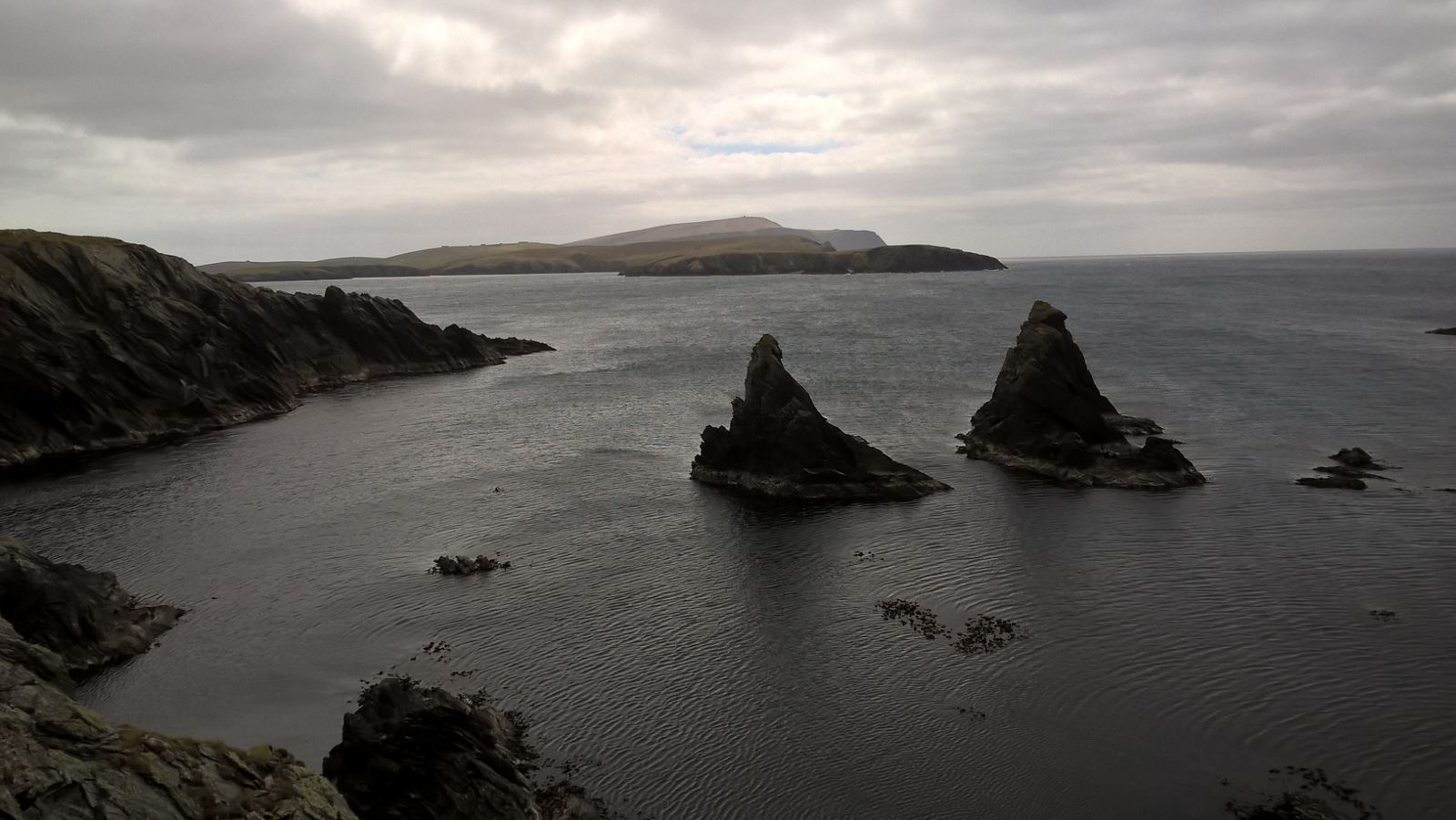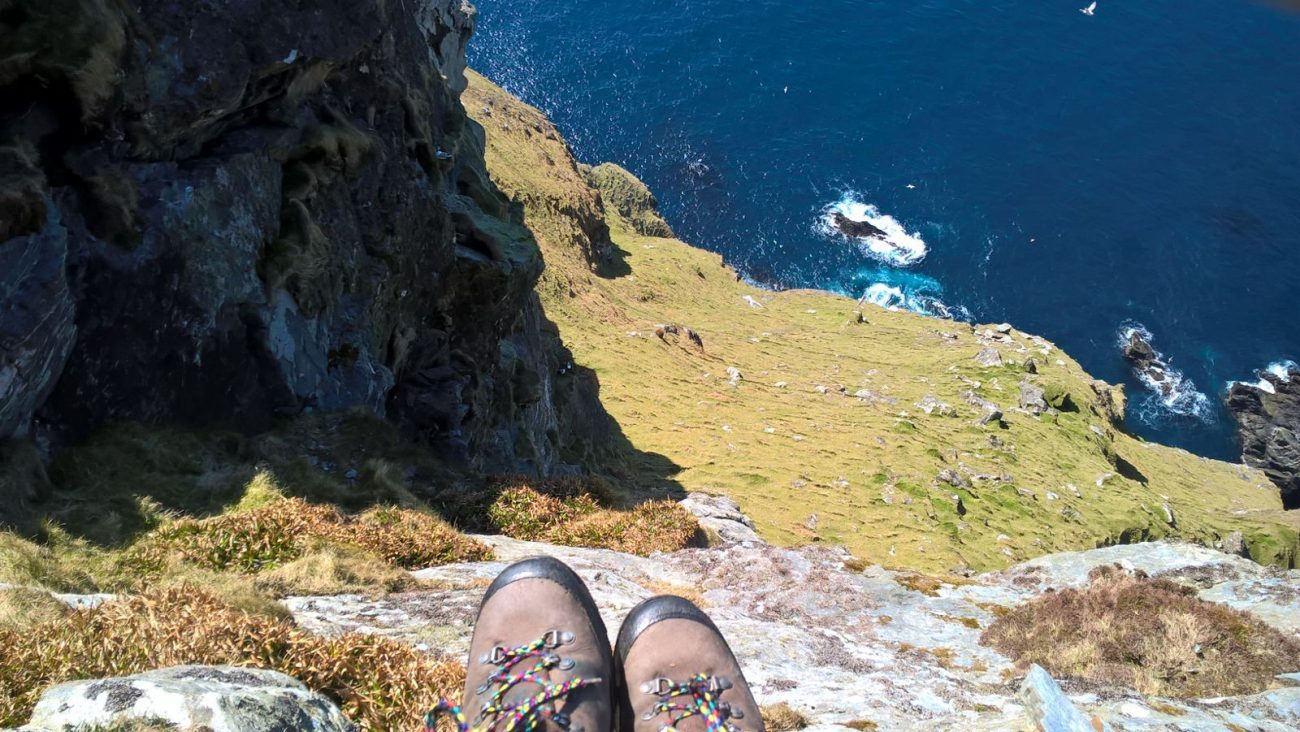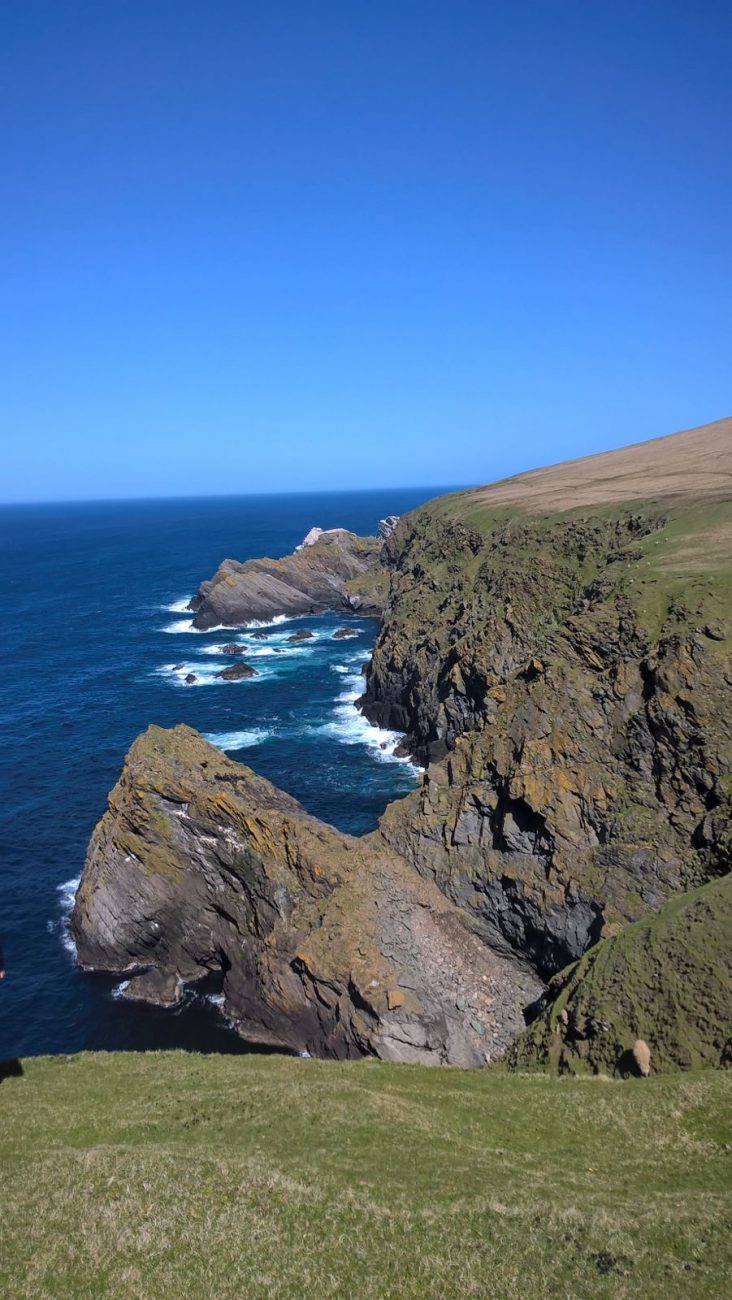
On the Edge
Fritha West
July 2, 2020
Standing at the top of Hermaness, peering down at a raft of puffins below me, I wonder how much further I can creep forward. The edge here is rocky and sandy, and it’s hard to know where to put my feet as the ground slopes slowly but surely towards hundreds of meters of sheer cliff below. At least it isn’t raining, I tell myself. When it rains here the grassy fescues and sedges become as slick as ice. A dry day, windy or not, is as rare as it is welcome in the Shetland Isles.

When the rest of the team are here, the moment they see someone getting too close to the edge, up goes the cry of “Amber!â€. A teasing tone, accompanied by finger wagging and tutting, telling you you have left the comfort of the Green safety zone and need to watch yourself. They can see what you can’t – perspective is a tricky thing on a clifftop- and it’s good to know someone is looking out for you. But sometimes, it’s a louder shout of “RED!â€, when you are contravening the at-least-2-meters-from-the-edge-at-all-times rule – and if you are, this shout is emitted with such ferocity it might shock you into to jumping either way. It can be frustrating; many of us have been in far more dangerous situations than this, on far less stable edges, toes hanging over the ends of the thrift tufts with one hand balanced against the rock, eyes fixed on a mass of birds below, each no more than specks on the rolling sea. Smaller than the tiny black dots of frogspawn on the surface of a pond. But that has been on our own time. And this is work.

Birds counted must be within 200m of the shoreline, in case your view intersects with that of the volunteer on the next transect section. So you have to learn to read the landscape features, the height of each stack, drawing invisible lines on an ever moving canvas, memorizing the maps in your pocket because if you got them out, they’d be blown away. No getting distracted by the gulls or the skuas (also known as bonxies, probably for their tendency to “bonk†you on the head as they fly past), or stopping to watch the gannets chattering on the outcrops. This survey is critical, a vital contribution to the national Seabird Census, monitoring what may be one of the worst colony declines in recent years. So there are rules that must be followed, and there isn’t time to rescue wayward surveyors who have been too cocky for their own good.
It’s a strange feeling. Almost dreamlike, to be standing so close to such a huge drop. 200m of crumbling gneiss above crashing waves. And the winds here rival hurricanes, the air feels solid when it hits you. I don’t get vertigo- I usually pride myself on having a head for heights – but as the gusts pick up again and lurch me forward, I almost cry out in panic. Staggering back and swearing quietly under my breath, I glance around for another team member, someone to share my close shave with. But they are all walking their own transects, the other side of the cliffs. I am alone, just me, and a nearby bonxie, watching me keenly. I shake my head and lift my binoculars, recommencing the count. 2 meters now feels a little too close.
Paper link: here.